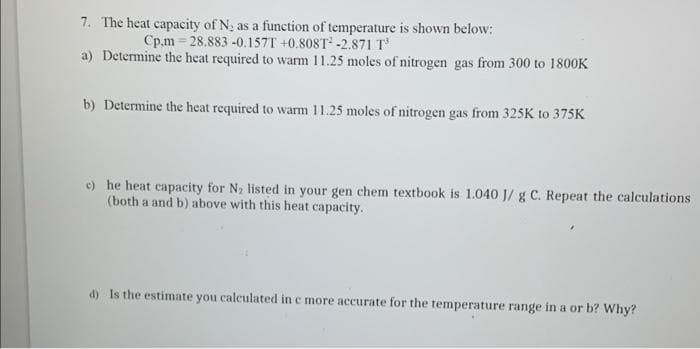7. The heat capacity of N; as a function of temperature is shown below: Cp.m 28.883 -0.157T +0.808T -2.871 T a) Determine the heat required to warm 11.25 moles of nitrogen gas from 300 to 1800K b) Determine the heat required to warm 11.25 moles of nitrogen gas from 325K to 375K e) he heat capacity for N listed in your gen chem textbook is 1.040 J/g C. Repeat the calculations (both a and b) above with this heat capacity.
Thermochemistry
Thermochemistry can be considered as a branch of thermodynamics that deals with the connections between warmth, work, and various types of energy, formed because of different synthetic and actual cycles. Thermochemistry describes the energy changes that occur as a result of reactions or chemical changes in a substance.
Exergonic Reaction
The term exergonic is derived from the Greek word in which ‘ergon’ means work and exergonic means ‘work outside’. Exergonic reactions releases work energy. Exergonic reactions are different from exothermic reactions, the one that releases only heat energy during the course of the reaction. So, exothermic reaction is one type of exergonic reaction. Exergonic reaction releases work energy in different forms like heat, light or sound. For example, a glow stick releases light making that an exergonic reaction and not an exothermic reaction since no heat is released. Even endothermic reactions at very high temperature are exergonic.

Step by step
Solved in 3 steps with 2 images









